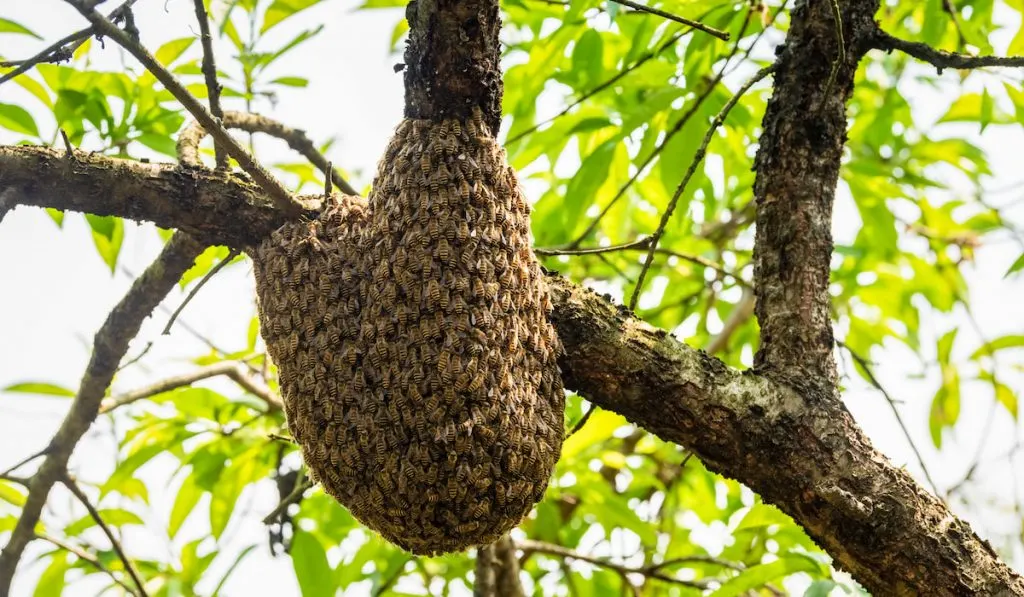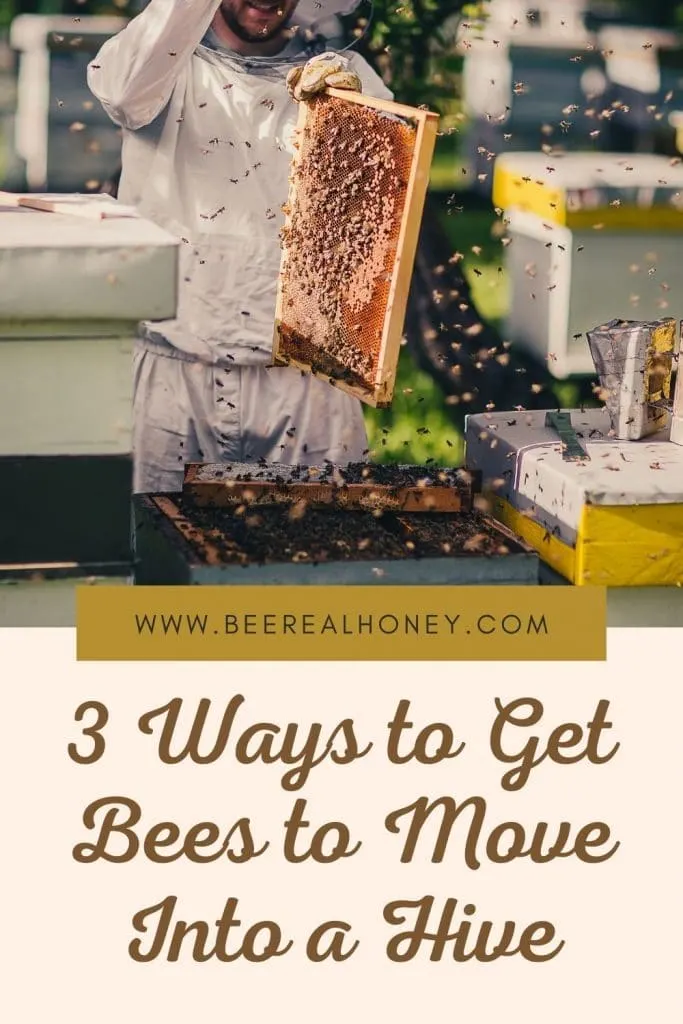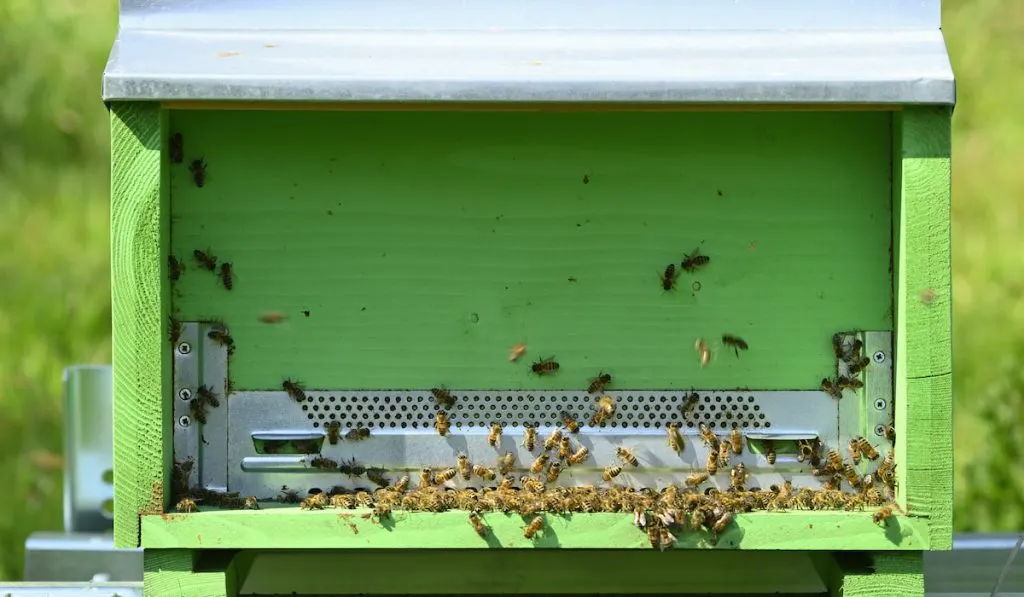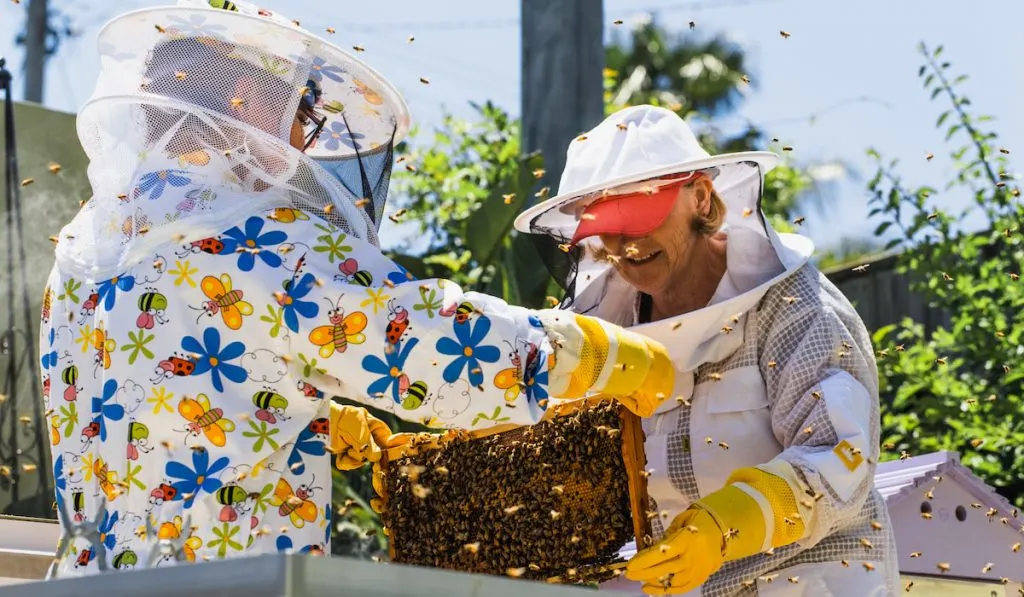*This post may have affiliate links, which means I may receive commissions if you choose to purchase through links I provide (at no extra cost to you). As an Amazon Associate I earn from qualifying purchases. Please read my disclaimer for additional details..
What do most fruits and honey have in common? They were produced by bees. If you want more yield in your garden and honey to use or sell, you need bees. Are you new to beekeeping? This article will guide you on how to get bees to move into a hive and what to do when they move into the hive.
How do you get bees to move into a hive? With this article, you will learn how to get bees to move into a hive in three ways:
- Hunting for bee swarms
- Attracting bees into a hive naturally
- Attracting bees into a hive with attractants
Where and when should you hunt for bee swarms? What are good examples of bee baits? What other information should you know about attracting bees? Let us discuss getting your bee colony.
Table of Contents
How to Lure Bees to the Hive
As earlier stated, you will learn how to get bees to move into a hive in three ways.
1. Hunting for Bees Swarms

What is a bee swarm? A bee swarm is a bee colony that earlier split from a mother colony and is searching for a new hive. Depending on your location, you can find bee swarms from February to June. Bees split from their mother colony mostly in spring.
A swarm of bees can be identified by the way the bees cluster around each other (with a queen in their middle) while attached to a branch or any platform. A bee swarm is just temporary as scouts are sent out to search for a new home (i.e. hive) for the swarm.
A bee swarm does not fly too far from its mother colony, so if there is no beehive around you, it is quite difficult to find a bee swarm around you.
A few ways through which you can easily be informed of swarm sightings are:
- Give your contact information to firefighters
- Registering in local beekeeping clubs
- Inform your friends and family about your interest
- Give your contact information to fumigators and pest controllers

What You Need to Catch a Bee Swarm
To catch a swarm of bees, you need:
- Bee brush
- Pruning shear
- Lemongrass oil
- Lightly colored tarp or bedsheet
- Protective gear (hat veil and gloves)
- Breathable box (wooden or cardboard)
Have you gathered the needed items? It is time to catch the swarm.
How to Catch A Bee Swarm
- Wear your protective gear
- Spread a lightly colored sheet on the ground and then place the breathable box on it
- Gently move the bees into the box. Aim for the queen because, without her, all the moved bees will fly back to her. Keep moving the bees until they stay in the box.
- If the swarm is attached to a branch, prune the branch and put it with the bees into the box
- If the swarm is on the ground, pour lemongrass oil on the box and keep the box sideways. The bees will move into the box on their own.
- Close the box but leave some holes open for stragglers and returning bee scouts to get into it
- Leave the box in that location until sundown (that is when bee scouts return and the bees are less likely to fly out of the box by then).
- At night, close the box entirely with tape or place it in a mesh swarm bag
- Gently transport the swarm to your preferred location
- Move the swarm from the box into their new hive before morning.
Congrats on catching your first bee swarm.
Caution: Consider the position of the bee swarm. If it is too high above, decide whether it is safe or not to use a ladder to reach it. If this is your first time handling bees, be sure to learn from a professional beekeeper before trying to collect a wild swarm on your own.
2. Attracting Bees into A Hive Naturally
You do not have to spend so much effort to get bees to move into a hive. Bees will naturally move into a hive if they like it. For a swarm of bees to move into your hive, you will need:

- Lemongrass essential oil
- Bait hive (1.4ft3 or 40 liters)
- Old frame from a healthy hive
Here are some useful tips for you:
- The bait hive should be in a dry and shady place
- The floor of the bait hive should be solid, not open mesh floor
- The hive should have an entrance with a diameter of 1.25 inches
- Insert one or two old frames from an active beehive into your bait hive
- The bait hive should be at least 650-1000 feet (or 200-300m) away from an active beehive
- Cover the entrance of the hive with mesh that allows bees to get in, but not birds or rodents
When you have gathered the items and applied the tips above, here is the process of getting bees to move into your beehive:
- Position the bait hive: You do not have to place it at its permanent location. You should place it at a location where it can be seen by bee scouts.
- Rub some lemongrass oil on the inside face of the hive.
- Wait for bee scouts to inspect the hive: This can take several weeks to months. Remember that bee scouts will inspect various locations and a bee swarm will move into the best hive discovered by their scouts.
- Wait for a bee swarm to move into the hive: You should know that the chance of a swarm of bees moving into a hive without attractants is not very high.
- If you are lucky enough for a bee swarm to move into your bait hive, congratulations!
Note: Bee scouts are usually expert foragers. To increase your chance of getting bees to move into a hive, place the hive in a location where bees pollinate flowers.
3. Attracting Bees into a Hive with Attractants
The easiest way to lure bees into a hive is by using attractants. Some ways you can use attractants are:
Rubbing the Bee Hive with Bee Wax
You can get more bee scouts to inspect and approve your hive if you cover the hive with bee wax. Mixing the bee wax with lemongrass oil gives even better results.

Installing a Bee Feeding System Nearby
A bee swarm will happily move into a beehive that is close to a bee feeding system. Bees prefer a hive close to a source of food. You should place the system approximately 100 meters (330 feet) away from the empty hive.
Rubbing the Hive with Lemon Balm Plant
Bees love the smell of lemon balms. Most bee scouts are expert foragers and will approve a beehive that has the smell of lemon balm plant.
Rubbing the Inside of the Hive with Synthetic Pheromones
Pheromones are chemical signals bees use to communicate with each other. If you rub the inside of the empty beehive with artificial pheromones, bee scouts will think that the hive was occupied by a colony. Bees prefer a hive that has been occupied by other bees because it means less work for them.
You can buy synthetic pheromones online or at a local beekeeping supply shop.
You have a higher chance of attracting bees into your hive when you use attractants. What will you if bees move into your hive?

What to Do After Catching a Swarm of Bees
Congratulations! A swarm of bees has moved into your beehive. When your hive is occupied by bees, you should not move the hive to its permanent location immediately. If you disturb the swarm, the bees will leave the hive for another one.
You should wait for two or three weeks or until you see foragers carrying pollen into the hive before you move the hive.
To prevent your bees from flying out of the hive while you are moving the hive, block the entrance of the hive, or move the hive at night or during a light rain.
When you arrive at the permanent location, wait for 15 minutes or until the bees settle down before you open the hive.
Final Thoughts
Remember that you should be careful when catching a bee swarm or handling bees. You can get a swarm of bees to move into your beehive in spring. Bees will move into your bait hive if the conditions are right or you can use attractants to lure the bees into the hive.
Now that you know how to get bees to move into a hive, when will you construct or purchase your first bait hive? Share your thoughts in the comment section below.
